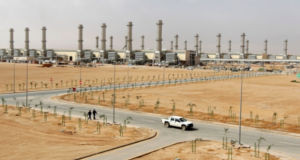 It was an unhappy to start to June for European equity markets yesterday, as concerns about the global economy reasserted themselves once more, after the latest Chinese data disappointed, though we managed to close off the lowest levels of the day after US markets entered the fray.
It was an unhappy to start to June for European equity markets yesterday, as concerns about the global economy reasserted themselves once more, after the latest Chinese data disappointed, though we managed to close off the lowest levels of the day after US markets entered the fray.
A slightly better than expected US ISM manufacturing report for May along with a fairly unremarkable Beige Book survey from the Federal Reserve, and a late rebound in oil prices helped US markets finish more or less unchanged on the day.
The resilience of the ISM survey was in stark contrast to recent disappointing regional surveys raising the question as to what sort of condition is the US manufacturing sector really in?
The Beige Book survey pointed to economic growth as being “modest” along with some slightly rising price pressures, which came across as about as compelling as an average school report, certainly not the type of report that would suggest that a rate hike was imminent, something that the bond markets clearly concur with as the odds of a June hike slipped into the low 20%’s.
Attention will inevitably shift to tomorrow’s US payrolls report, but first we have the latest ADP payrolls report for May which is expected to show a rise in April’s 156k jobs number to 177k.
Before that though events in Vienna, Austria are likely to take centre stage today as Austria’s corporate hospitality and services sector gets set for a nice boost from the corresponding meetings of OPEC and the European Central Bank.
While the hoteliers of Vienna celebrate their good fortune the rest of the investment community will no doubt spend the day looking for clues as to what, if any new policy moves, get announced by these so called guardians of price stability in global oil and financial markets.
The reality is that for all the speculation about what might come out of these meetings the end result will in all likelihood be very little.
OPEC is unlikely to come up with any agreement on production freezes simply because the self-interest of Saudi Arabia and Iran won’t allow it.
There was some talk late yesterday from OPEC sources that the group was considering some form of output ceiling. While this sort of chatter isn’t new what is surprising is that the market still falls for it, given that Iran would have to agree to maintain its current production level at 2.2mio barrels despite earlier pledges to increase it back to pre- sanction levels of 4mio barrels a day. That would be a significant climb down on Iran’s part and would certainly suit Saudi Arabia.
We also have the latest European Central Bank rate meeting where it is highly likely that the governing council will leave policy unchanged, as ECB staff present their latest growth and inflation forecasts. Given that the OECD upgraded its growth forecast for the euro area yesterday we could well see a modest upgrade from the ECB as well. Doing this could run the risk of pushing the euro higher something Mr Draghi will be keen to avoid so his tone will be particularly important in the press conference.
In this context as well as divisions on the ECB council about further measures, a decision to hold policy and “wait and see” is likely to be the main outcome.
At the March meeting Mr Draghi announced four new four year TLRTO packages with the first one set to come into effect this month, and it is likely that ECB policymakers will be looking to see the effects these have on monetary and lending conditions in Europe before acting further.
In the UK as the pound got sold off for the second day in succession on renewed “Brexit” concerns the manufacturing sector managed to rebound from its slump into contraction territory in April, rebounding to 50.1 in May, in a small crumb of comfort, as a pickup in domestic orders helped the sector eke out a recovery into expansion territory. Today’s construction PMI is expected to come in unchanged at 52, with the residential construction component likely to remain the main growth area.
EURUSD – continues to come under pressure with support near the 200 day MA at 1.1100, as well as trend line support at 1.1040 from the December lows. While above these key levels the current uptrend should remain intact with a move back through 1.1250 needed to stabilise, and point the way to a return to the 1.1400 area.
GBPUSD – the pound continues to fall sliding below last week’s low at 1.4420 potentially opening up a move towards the May lows at 1.4330. Below that we have trend line support at 1.4260 from the lows this year. A move back through the 1.4500 level is needed to stabilise and argue for a return towards 1.4700.
EURGBP – the euro continues to push higher, breaking above the 0.7720 level to close in on the 0.7820 area, where we have trend line resistance from the April highs. A move back below 0.7720 argues for a move back towards 0.7640.
USDJPY – having dropped back below the 110.50 level we now look set to retarget the 108.70 area, a break of which could well reopen the recent lows at 106.50. A move back through 110.50 retargets the 111.25 level.













